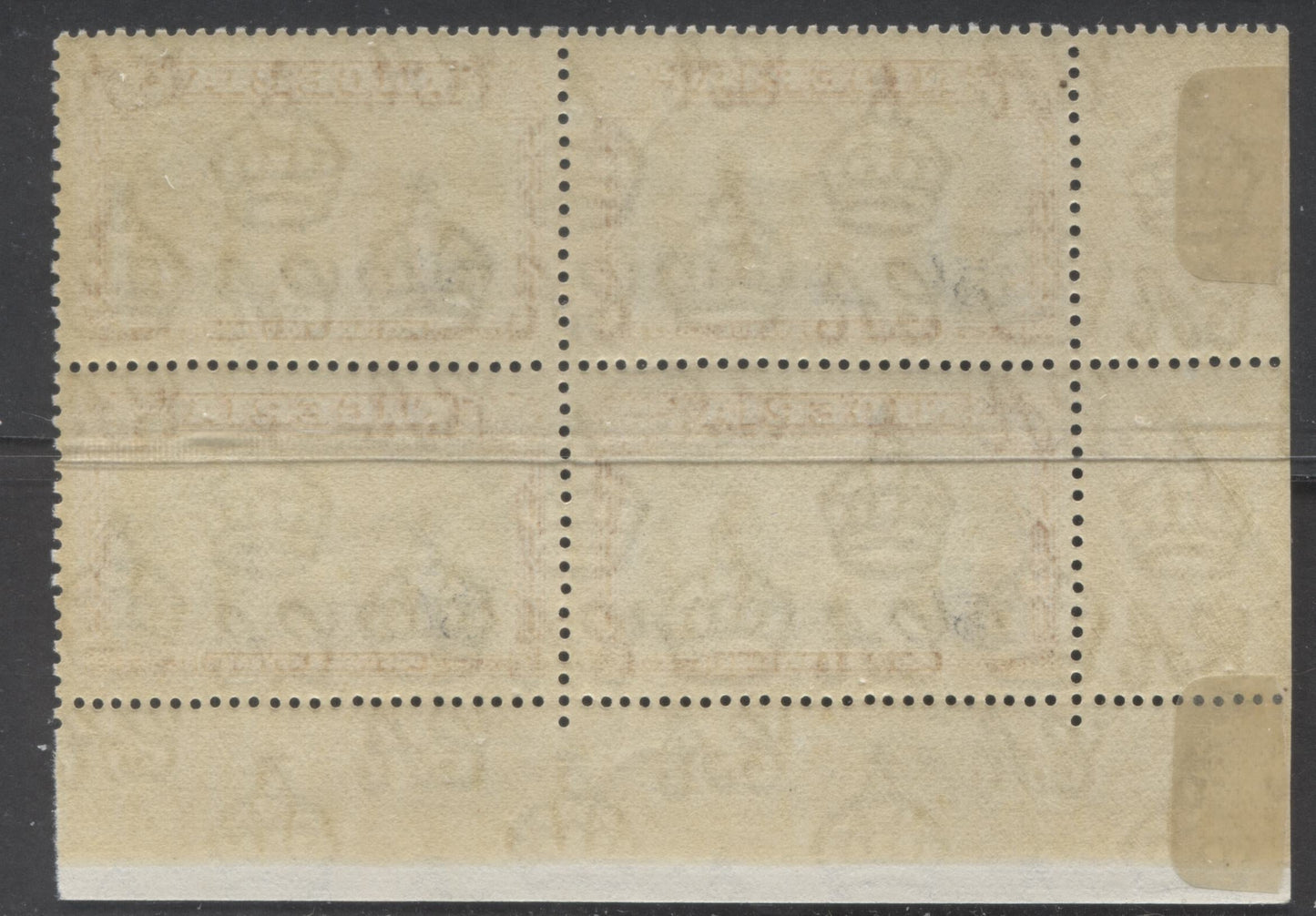Brixton Chrome
Lot 97 Nigeria #64cvar (SG#59var) 5/- Black & Orange King George VI & Niger Bridge, 1938-1952 King George VI Definitive Issue, A Fine NH/OG LL Corner Block, Comb Perf. 13 x 11.5, 1938 Printing, Vertical Scratch In Sky Variety
Lot 97 Nigeria #64cvar (SG#59var) 5/- Black & Orange King George VI & Niger Bridge, 1938-1952 King George VI Definitive Issue, A Fine NH/OG LL Corner Block, Comb Perf. 13 x 11.5, 1938 Printing, Vertical Scratch In Sky Variety
A fine NH/OG LL corner block of the 5/- black & orange King George VI & Niger Bridge from the 1938-1952 King George VI Definitive Issue comb perf. 13 x 11.5. Most of the 1938 printings exist with two or more distinct shades. Where this is listed in Gibbons is on Falkland Islands and Gambia, where the 1d and 1.5d values are listed in up to 3 shades, ranging from vermilion to dark carmine. Gibbons used to recognize the same variation for the 1d of Bermuda, but dropped it several years ago, as many believed they were colour changelings due to moisture. But this is a visual hobby if nothing else, so we have differentiated all variations of shades on these printings. Corner Blocks and imprint blocks are seldom seen for any of the 1938 printings. The block offered here is hinged in the selvedge only, with all stamps being NH.
2022 Scott Classic does not list the individual printings of this set, nor any varieties. Also, it does not list a separate NH premium for each stamp, but a 100% premium can generally be inferred. Our values are generally estimates that are based on the Scott or Gibbons values, adjusted for scarcity of individual varieties, condition and NH status. Based on this, our estimate of the value is $525. The block offered here grades 70 as follows:
Centering/Margins: 40/70
Paper Freshness: 5/5
Colour: 5/5
Impression: 5/5
Absence of Visible Paper Flaws: 5/5
Perforations: 10/10
In our study of these varieties we note that several are constant in nature, and you will see several such varieties in the sale, and they are so identified where we know for certain that they occur more than once, and on different values of the set. Those not identified as constant may indeed still be constant, but detailed study of more full sheets, or positional blocks, which are not plentiful would be required to demonstrate that the particular variety is semi-constant or fully constant. The sheets for the low values of this issue are 120 stamps arranged in 10 rows of 12, NOT 100. So, this will explain why my position numberings seem off to those of you who are used to thinking in terms of sheets of 50 or 100.
Share






